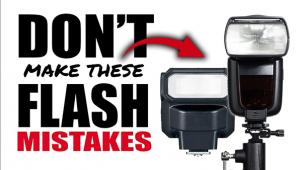Best Image Quality? Shoot in Raw Format

This photo was made in Raw file format, then enhanced using a Raw processor. Doing so allowed me to get exactly the color, contrast, and richness I wanted. Shooting in Raw is what allowed me to get the most quality out of the image file later.
The term Raw is rather odd for a file format, as it is not an acronym like TIFF or JPEG. It doesn’t stand for anything but the raw image information delivered from the sensor through the image processor to the memory card. Unlike JPEG or TIFF the information has been minimally processed in and of itself.
No, this doesn’t make it more organic. There are sets of instructions that go along with the raw file information, but those instructions have not been processed into the image file—it travels alongside it and is linked as Instructions. So, if you set a certain white balance when in Raw format your image will reflect those settings—but the information that “instructs” the information to read out that way is not embedded into the image file—it travels along with it, but it can be changed with no undue stress on the image information itself.
Some people speak of Raw as if it is “pure” image information—a digital negative, if you will, that can be processed in any fashion you desire later. This is a highly stretched analogy that harkens back to the black and white Zone System days, when you could expose then develop a negative accordingly for very discrete tonal control. The analogy works in that you can process the Raw image yourself to have it act as if you made any number of different camera settings (and more.) The only problem with Raw is that you must process and convert it before it becomes useful to anyone else, or to a printer or a web site. So, while it offers many benefits it does require more homework than JPEG or TIFF.
Raw does offer the advantage of being a “lossless” file format; in other works there is minimal if any compression of the information when it is written to the memory card. This is as opposed to JPEG, a “lossey” format which is compressed thus tosses away some information.
Raw has come to replace TIFF in DSLRs (it had been an option in some models in the past). TIFF is still very useful as a format in which to store image files after you have processed the Raw file. When you convert and “develop” your Raw files you can save them as TIFFs, or, if you work in Photoshop, as PSD (Photoshop format) files ot DNG files. You would save them as JPEGs for web, emails and for upload to various albuming sites.
The important thing about Raw format is that:
1) It allows you to process each image as if you had made image processing decisions in the camera.
2) It maintains its character even after you process the image, thus is always the “original” image information, and can always be altered later for different interpretations, again without loss or base alteration of the original image. In a way, it’s like a negative inm silver-based photography that you could print in many ways without changing the original negative.
There are some “drawbacks” to Raw.
1) It is proprietary, thus each camera maker has their own file structure that cannot be read by other manufacturer’s Raw software.
2) It cannot be used for email, for viewing on most portable storage devices or a format you can load onto a mobile device. Those must be converted to JPEG. Thus, it takes more of your time and energy than if you had shot in JPEG.
When you shoot in Raw the file extension on your images will denote which camera you used: NEF for Nikon, CRW or CRW2 for Canon, etc. If you work with Raw converter software and that is updated to your camera model you will be able to see the images in that software’s browser. If not, you cannot see the image. You then do whatever you will to the image in the converter program and Save as a Photoshop or TIFF file.
If your image processing program will not open the Raw file from your camera you can do one of two things: 1) Open the image with the software that came with the camera (the Raw converter) and Save As a TIFF file, then open the image in your main image manipulation software program. Note that many camera companies offer rudimentary or even fairly advanced image manipulation functions.
2) Go to the Adobe or other image program web site and see if they have any updates on their program to enable it to open Raw images from your camera. Manufacturers do change the Raw file organization on newer cameras so even if your program opens a Canon Raw file from an older Rebel, for example, it might not do so from a current model. If using Photoshop or other program, go to software company’s web site and look for support and downloads and see if your camera is listed there. If it is you can download the latest version (sometimes that will be free, sometimes it won’t be).
Should you shoot Raw all the time? I don’t, as there are some images I know will go right to email or the web or won’t be more than “functional” images. But when I want to make images for print enlargements, or I’m doing commercial, stock or portrait work, I like the way the Raw image can be changed and how much information it yields. Raw is the best bet for the best image quality.
The real advantage of Raw files is that when you convert them you gain excellent control of many image attributes; indeed, they are more subtle controls than what you can set in the camera. The true advantage is that even though you change those image attributes, your original file information remains intact.
I’ve just skimmed the surface on the advantages of Raw, and today’s Raw converter programs offer so much fine control that you can do most of your image processing work using them alone. But I hope I have persuaded you to try Raw file format next time you pick up your camera. The end result will be highr quality images than you ever might have achieved before.
If you wanty to learn more. our coming April, 2014 issue will have a special feature on the tech side of Raw along with other interesting tech articles, so look for it in your mailbox or on your newsstand soon.







































